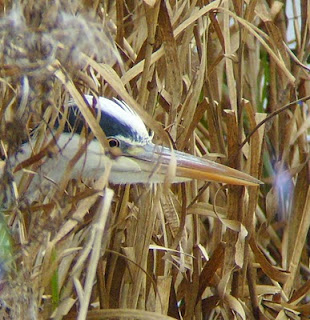First stop was the Derbyshire County Council car park in Cromford Canal, a traditional winter birding spot for Hawfinch. Birds are regular here in the winter months and we were not disappointed as one was immediately spotted at the entrance to Willersley Castle. It sat at the top of a tree for a good 5 minutes and, despite the grey conditions, I managed to get a few decent shots. Note the enormous bill on the bird below!
Hawfinch
Wigeon
We then headed back up to the dam wall to have another look for the Smew. Another search through the Tufties eventually paid dividends when the bird was spotted diving and fishing just 20m from the bank. Again, the bad light and the bird's constant diving didn't make it easy to get a photo, but, with persistence, we eventually managed a few record shots.
Redhead Smew
Whilst watching the Smew, we also noticed a couple of Ruddy Duck, a real rarity nowadays, a group of approximately 50 Lapwing feeding on the fields behind the dam and three Pink-footed Geese, which flew directly over our heads! Not quite sure where they came from or whether they're "real", but nonetheless a good record which I sent into the Derbyshire Ornithological Society.

























